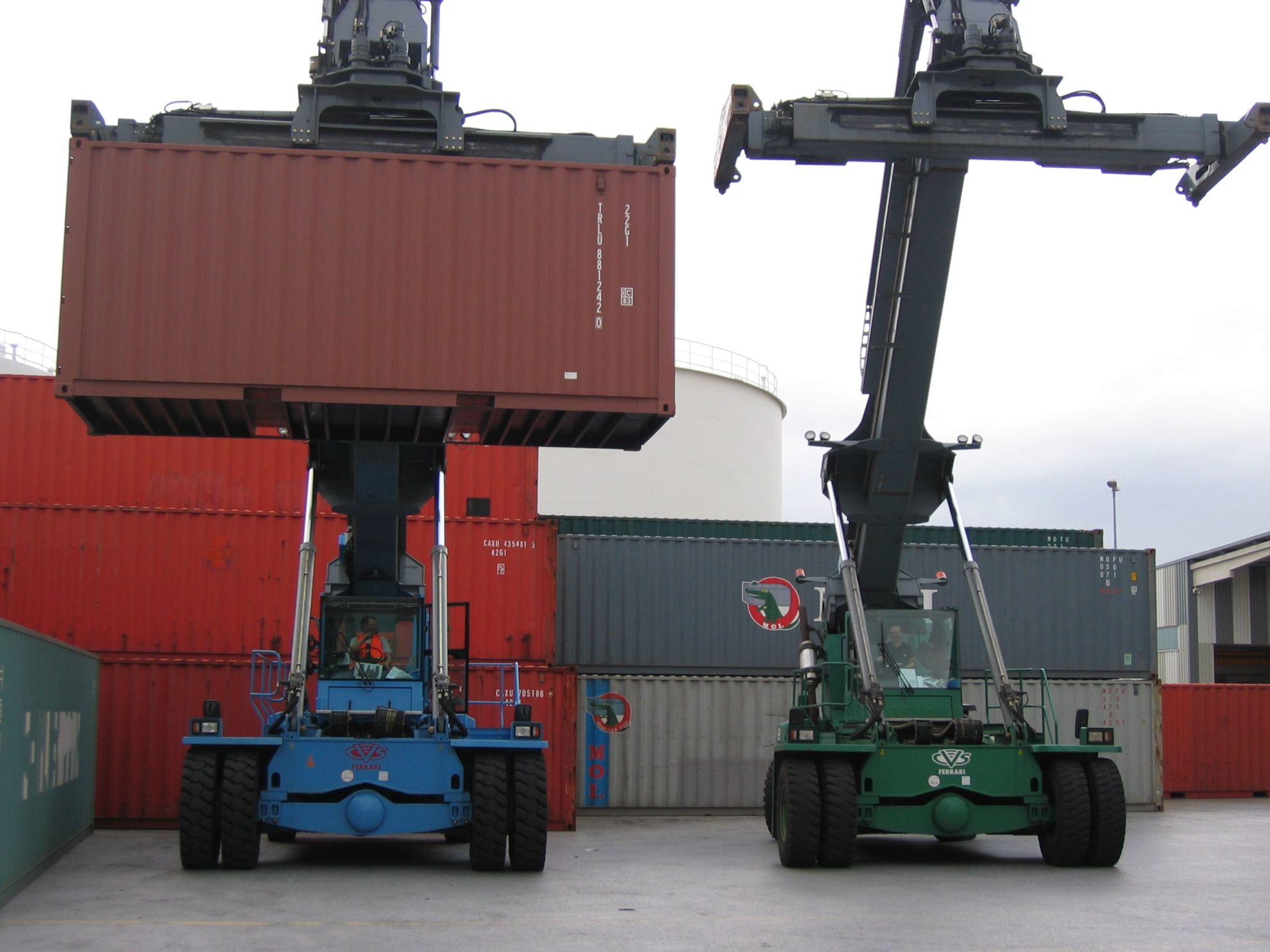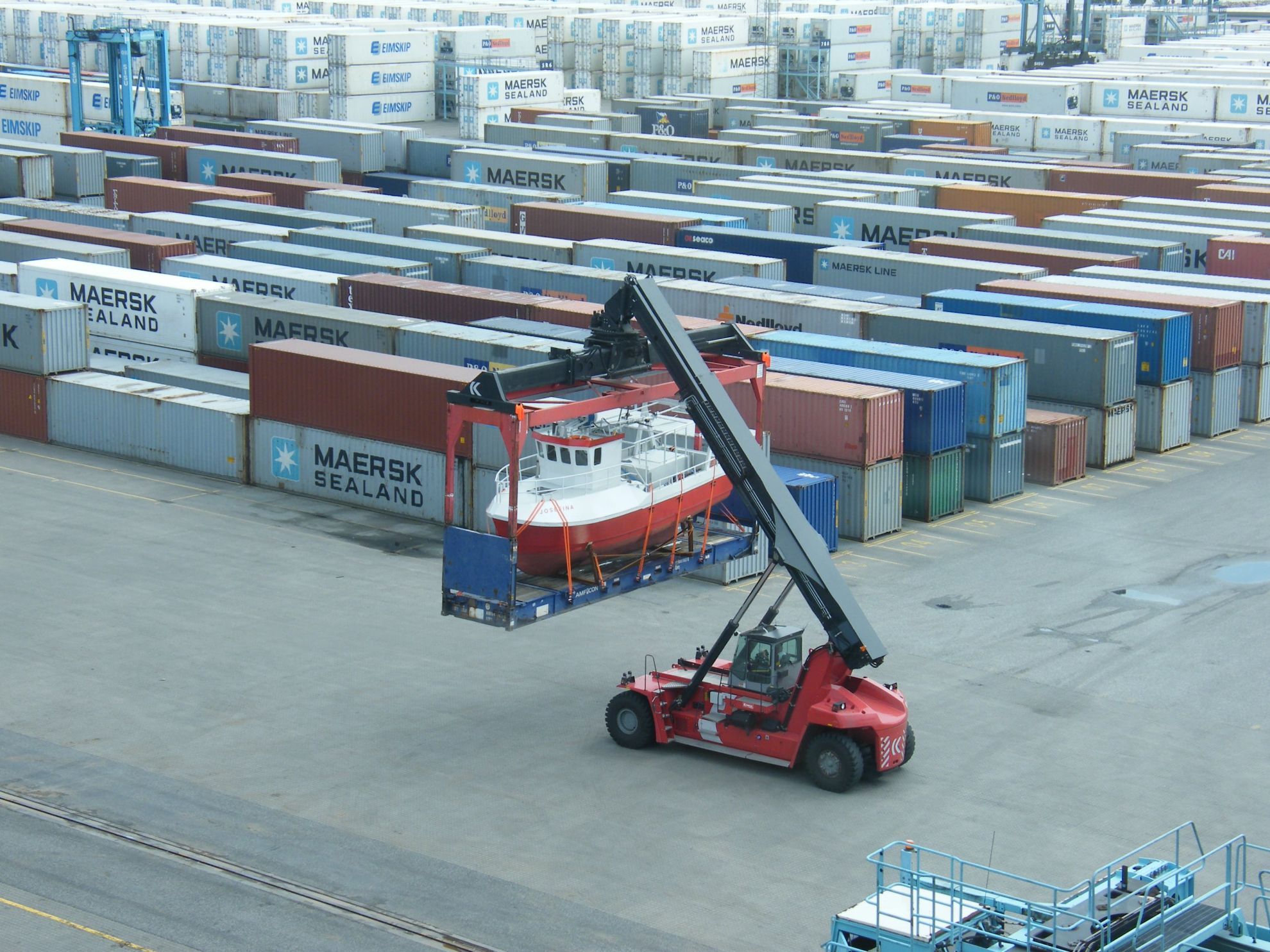![[VIDEO] Reachstacker VR training simulator. How can it save your money? - MarinePoland.com [VIDEO] Reachstacker VR training simulator. How can it save your money? - MarinePoland.com](https://www.marinepoland.com/zdjecia/artykul/1716/6592/1200x0/2/reachstacker_3-min.jpg)
Simulation training is known for increasing the safety of the training process and boosting its effectiveness. However, in times of inflation, war, and economic uncertainty it is worth mentioning one more factor, speaking in favor of VR training simulators. They can significantly reduce the costs of training. Find more information in our article.
At the beginning of our article, we would like to thank Landa Consulting for providing us with the necessary data.
Please note that for the purpose of this article, we rounded the złoty (PLN) to euros (EUR) conversion rate as 1 EUR = 4.5 PLN, and all figures are valid as of November 2022.

How much does a reachstacker cost?
According to the data gathered by Dominik Landa from Landa Consulting, one of the most common type of a reachstacker that can be seen in Polish ports is KALMAR DRG 450-65S5. The new one costs from 480 000 to 530 000 EUR. You can also rent it for approx. 9 000 EUR per month.
One of the most common forms of financing for a reachstacker is a leasing installment. According to Landa Consulting, the monthly cost of it is from 7 000 EUR to as high as 9 000 EUR, which divided by the number of working hours (160) gives us 56 EUR per hour. For the purpose of this article we do not analyze the purchase of a reachstacker for cash, because it would be very hard to count the cost of one working hour – the longer you have the reachstacker, the least cost per working hour you get.
What kind of monthly costs does a reachstacker generate?
A reachstacker generates costs that cannot be unnoticed. The one that we took a closer look at, KALMAR DRG450-65S5, needs approximately 20 liters of diesel per hour. We need to add an additional one liter of AdBlue per hour to get a full picture of fuel consumption.
But costs are far more than just fuel. Many people do not realize how quickly the reachstacker’s tires wear out. In fact, you need new tires every 4 000 working hours.
Last but not least, service costs contribute to the third, big category of costs. Similarly to the tires, service and maintenance works for new equipment must be performed every 500 working hours.
How much does operating a reachstacker cost?
First thing – diesel and AdBlue
As much as 20 liters of diesel and one of AdBlue costs approx. 160 PLN for diesel (20 liters * c.a. 8 PLN/liter) and 5 PLN (the price for one liter of AdBlue). It altogether makes the fuel cost of one working hour 165 PLN (approx. 37 EUR).
Remember about the tires
New premium tires are available from 100 000-120 000 PLN. Remembering that you have to change them every 4 000 working hours, it makes the average costs of working hour approx. 25 PLN (approx. 5.5 EUR).
Service and maintenance costs
Let’s count how much is does a reachstacker’s periodical maintenance cost. According to Landa Consulting, such maintenance could cost approx. 95 200 PLN for every 4 000 hours. Divided by the number of working hours, this gives us the result of 24 PLN per working hour (approx. 5.5 EUR).
Do not forget to add the 252 PLN (or 56 EUR) of one working hour for the leasing installment.
All in all, one working hour costs a reachstacker’s owner approx. 466 PLN (104 EUR). It does not comprise the costs of an operator’s salary and eventual repairs out of warranty scope etc.

How much does a reachstacker in VR cost?
Flint Systems offers reachstackers simulators from 320 000 to 400 000 PLN (71 000 to 89 000 EUR). We also offer an alternative – renting a simulator. We offer 12 monthly installments of approx. 20 000 PLN each, with 120 000 PLN of initial charge (4 450 EUR per month, with 26 600 EUR of initial charge).
To this cost, you need to add an electricity bill. The simulator consumes 200 W energy at maximum work (all actuators running all the time), which gives you an average cost of 0.25 PLN per working hour, according to actual energy prices in Poland (0,05 EUR).
There are no maintenance costs.
Can VR training save your money?
Certainly yes. When comparing a real and virtual machine, it is quite easy to see the difference in price. We must not forget about the costs of accidents on a real machine, which can be huge, and which we avoid by training operators on a simulator.
Would you like to get more details?
Contact us!


